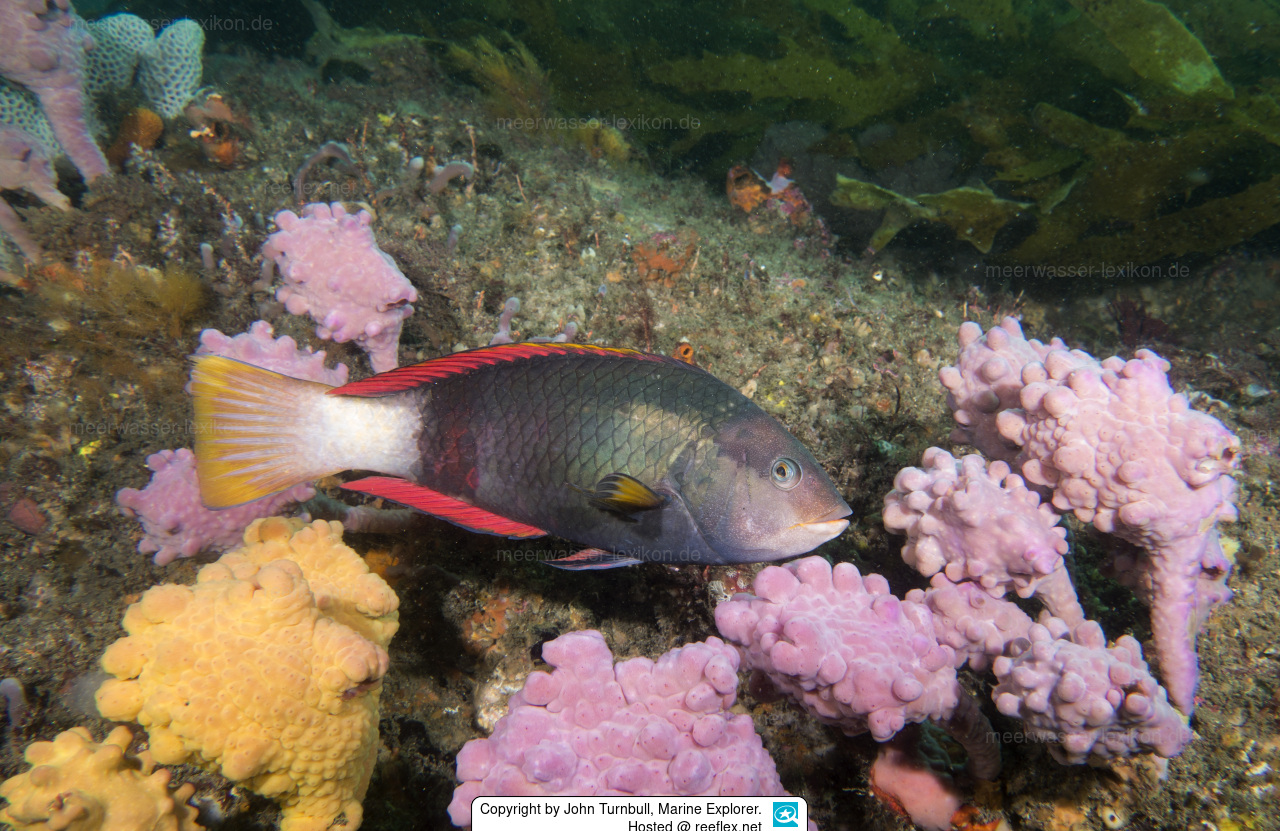Info
Notolabrus gymnogenis is a wrasse endemic to Australia and is a widespread species in south-eastern Australia from Queensland and New South Wales to Lord Howe Island.
The wrasse prefers shallow rocky reefs covered with algae. There is no information available about keeping it in reef aquariums, but the wrasse is very popular with recreational anglers.
As a protogynous hermaphrodite, Notolabrus gymnogenis changes sex.
Synonymised names
Labrichthys gymnogenis Günther, 1862 · unaccepted
Labrichthys nigromarginatus MacLeay, 1878 · unaccepted
Labrus cyprinaceus Shaw, 1790 · unaccepted
Pseudolabrus cyprinaceous (White, 1931) · unaccepted
Pseudolabrus gymnogenis (Günther, 1862) · unaccepted
Pseudolabrus nigromarginatus (MacLeay, 1878) · unaccepted
Jumping guard
A jumping guard prevents (nocturnal) fish from jumping out.
Wrasses, blennies, hawkfishs and gobies jump out of an unprotected tank in fright if their night rest is disturbed, unfortunately these jumpers are found dried up in the morning on carpets, glass edges or later behind the tank.
https://www.korallenriff.de/en/article/1925_5_Jump_Protection_Solutions_for_Fish_in_the_Aquarium__5_Net_Covers.html
A small night light also helps, as it provides the fish with a means of orientation in the dark!







 Dr. John Turnbull, Marine Explorer, Australien
Dr. John Turnbull, Marine Explorer, Australien













